Presidents: Herbert Clark Hoover
Hoover National Historic Site and Presidential Library, West Branch, Iowa
Visited in 2014.
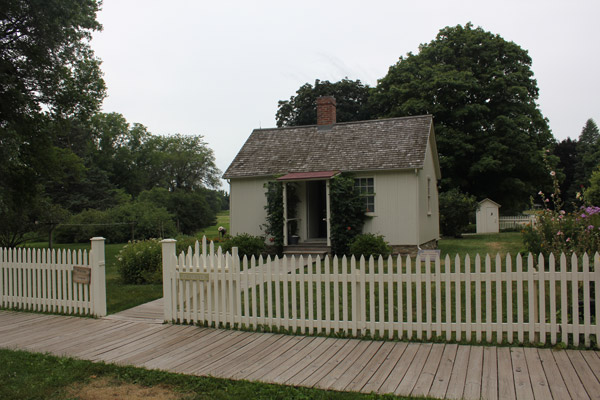
The blessed shed where our 31st president was born.
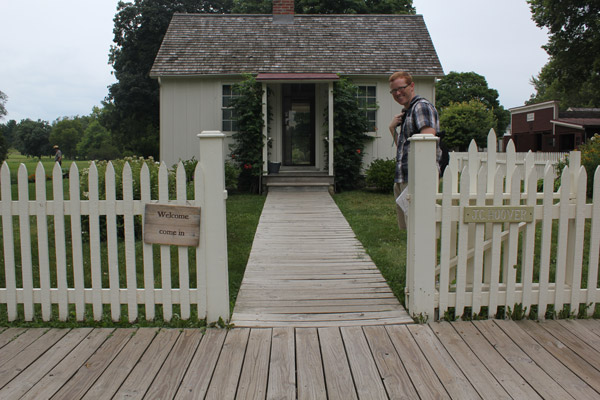
From this beginning, he became mind-bogglingly wealthy. Fun!
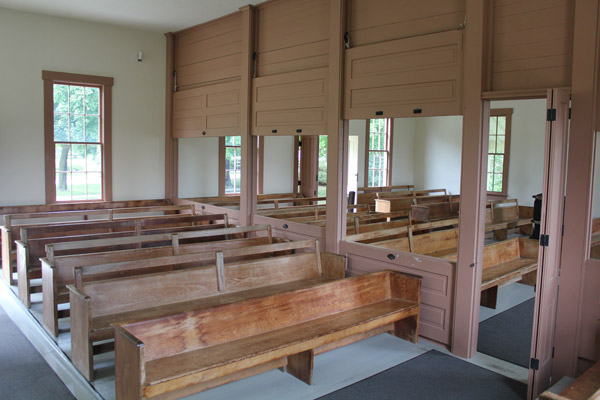
Inside the Quaker meeting house. The site gives a crash course on Quaker culture.
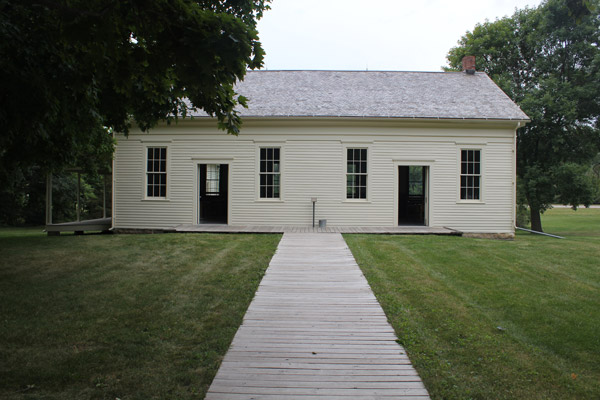
The outside of the Quaker meeting house. So sexy.
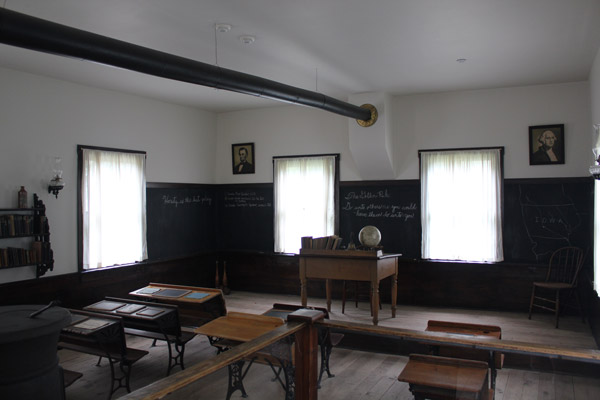
The schoolhouse in the preserved Quaker village.
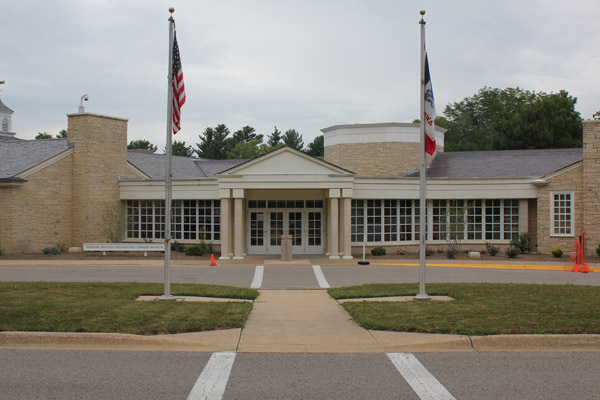
Heading into the NARA library and museum.
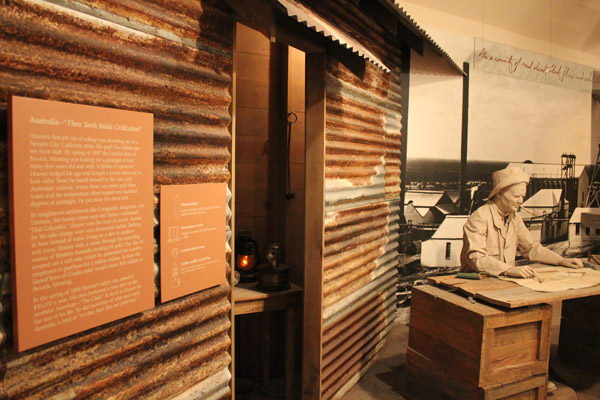
Exhibits on Hoover's mine engineer days, complete with creepy mannequins.
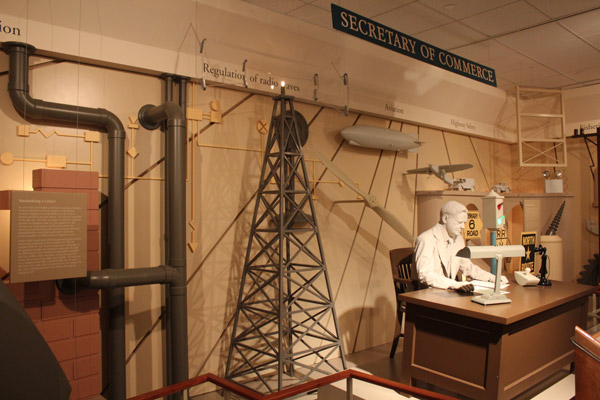
The secretary on the job. Easily, the finest Commerce secretary ever.
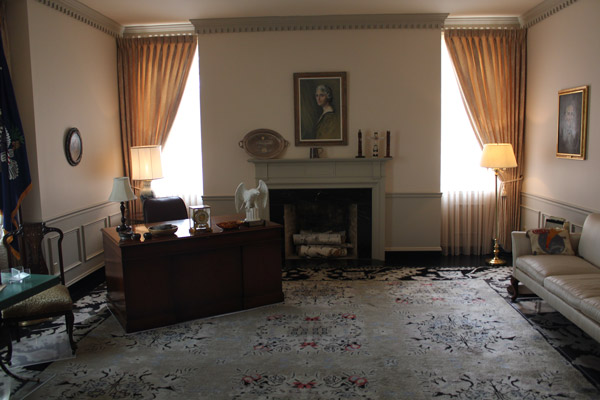
A re-creation of Hoover's office in the Waldorf Towers in New York.
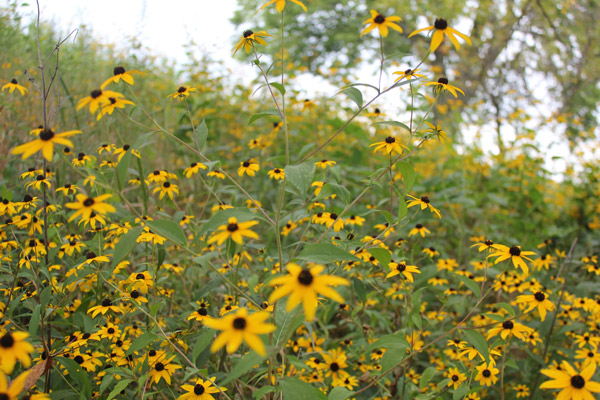
Heading through the meadow toward Hoover's grave.
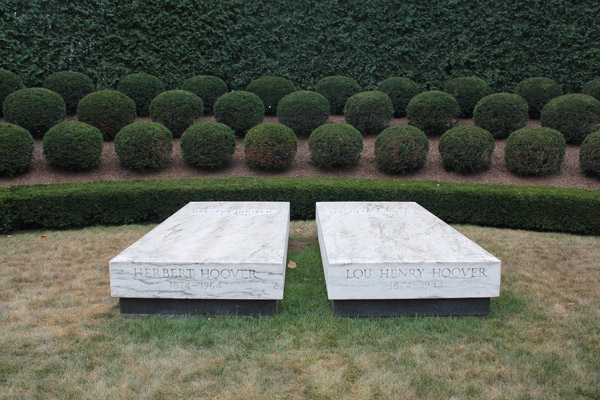
An appropriately Quaker-ish grave for Hoover and Lou Henry.
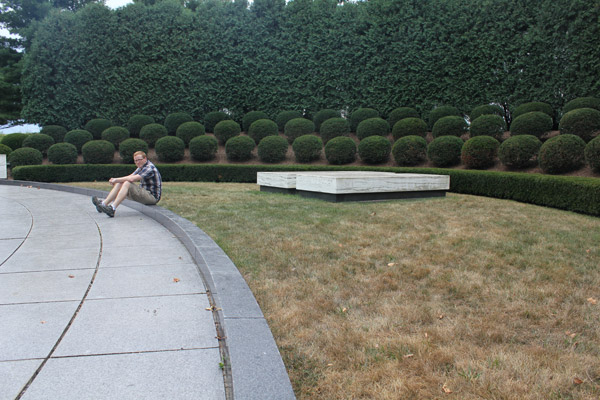
A wider shot of the gravesite. So many topiaries.
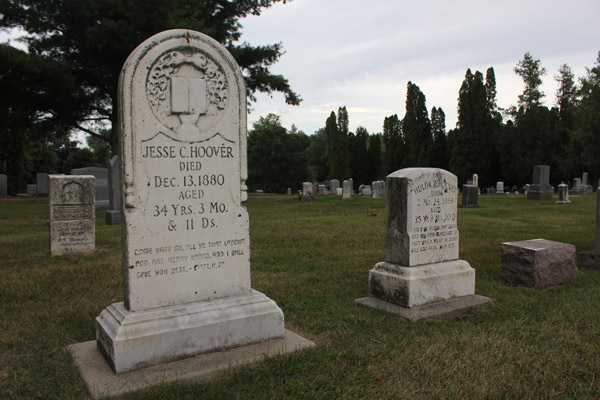
Hoover's parents at the nearby family burial plot.
By most accounts, Jesse Hoover was a decent guy. His family settled in West Branch, Iowa, in 1854. He married a fine Canadian immigrant named Hulda in 1870 and set up a blacksmith shop the next year. The nearby railroad guaranteed a steady stream of clients, and before long he was selling farm implements to the many hardworking hayseeds that populated the Midwest. He also fathered three children, raising them in the Quaker tradition.
Jesse squandered all that good will by keeling over from a heart attack in 1880, like some kind of jerk. His widow, Hulda, scraped together enough money to keep the family afloat. They took on boarders, stayed with relatives as needed and carefully spent they payout from Jesse's life insurance policy on the children's education. But Hulda loved her husband dearly, and she ultimately decided to honor his memory by keeling over from typhoid fever in 1884.
Those lazy bums got to rest eternally in the West Branch Municipal Cemetery, but their children had to soldier on. Overcoming the terrible example of his quitter parents, their middle child even did pretty well for himself. Herbert Hoover wasn't the best president, but he might have been the most interesting person to become president. His journey started in West Branch, and thanks to some forward-thinking Hoover fans and the National Park Service, there's actually something to see there.
The centerpiece is the birth cottage, where the magic began on August 10, 1874. The Hoovers had a tiny place not far from Jesse's blacksmith shop; it was surrounded by a smallish lot and backed up on a creek. The building you're seeing today is legit -- when Hoover got famous, it had been preserved by a curmudgeonly owner and shown to gawking visitors at 10 cents a pop. Hoover's wife, Lou Henry, acquired it in an estate sale when that curmudgeon finally died.
By the time Bert's sister came along, there were five people in two rooms, and neither room was big. Even by the smelly and cramped standards of the 19th century, things were getting to be barbaric, and family moved to a larger home across the street.
That second home is gone, but there's a surprising amount of 19th-century West Branch remaining. The park service maintains a tidy little historic district -- a few blocks where every home and structure is either original to the era of Hoover's birth or damn close to what baby Bert would have seen. The streets are dirt and the sidewalks are wooden boardwalks. You can't barge into neighbors' homes, but there's a Quaker meeting house to see, and a replica blacksmith shop, and a one-room schoolhouse.
The site also has park rangers, who will tell you in great detail what all the buildings actually mean, in the profound life-shaping sense. The school reflects the Quaker commitment to education. Hoover was a fine student and among our nerdiest presidents. The blacksmith shop reflects Hoover's early exposure to practical problem-solving. As the only engineer president, he had a methodical approach to government intervention. The meeting house represents Quaker values; Hoover had very specific ideas about charity, service and community that helped him become the most famous man in America.
After ma and pa Hoover kicked the bucket, Bert and his siblings were passed off to relatives in West Branch. But John Minthorn, an uncle on the West coast, suffered through the death of his only son. He requested Bert as a replacement, and before long Bert was on a train heading to Oregon.
You can pick up the rest of the story at the nearby Herbert Hoover library and museum. It has fine displays walking any visitor though the triumph and tragedy of Herbie, the love bug:
- Hoover's studies take him a brand-new college known as Stanford, where he gets a degree in geology and meets fellow rock enthusiast Lou Henry.
- Early work takes him to Australia, and not the quaint, civilized parts; he lives in the wilderness with a bunch of yabbos and starts developing a reputation as the "doctor of sick mines."
- Making a ridiculous salary, he gets transferred all around the world. He and Lou Henry were in China during the Boxer Rebellion, when shells regularly rained down on their home. Hoover was a guide to the troops that eventually showed up and led efforts to protect all the civilians.
- Almost insanely rich at the time of World War I, he goes full-on Quaker and starts using his amazing logistics abilities to run aid to Belgium, saving many thousands of people and becoming a cultural hero. He would only be surpassed in hearts of Belgians by Jean Claude Van Damme.
- In 1917, he is put in charge of the U.S. Food Administration, where he inspires the wartime nation to sacrifice with Meatless Mondays, Wheatless Wednesdays and Frogurtless Fridays. This economizing became known as "Hooverizing," giving parents everywhere a fun new way to tell their kids that they can't have hot dogs and need to shut the hell up.
- Warren Harding makes Hoover the secretary of Commerce, and he soon becomes the most active and popular cabinet secretary in all the land. His quest for standardization across industries make him a prominent regulator of broadcasting, railroads and more; he makes the case for massive hydropower projects; and he coordinates a giant private-sector relief effort after the Mississippi River floods. Calvin Coolidge (who disliked Hoover and called him "Wonderboy") decides not to run for a second full term, and Hoover locks down the 1928 nomination within months.
And they all lived happily ever after.
HA! The Great Depression kicked off about the same time as Hoover's presidency. There are a number of theories as to why he screwed up, and they're all a little bit true. Before becoming president, Hoover had never been an elected official, so he wasn't all that great at politics. Some people wanted an overwhelming and immediate government response to the economic collapse, but Hoover tried to ease into it -- in all his previous disaster relief efforts, the public sector was mostly a facilitator to help the private sector come to the rescue. Things were spinning out of control so fast, however, that Hoover was painted as a callous jerk. It's also entirely possible that no president could have saved the day, and Hoover was just the guy holding the hot potato.
They cover all this in the museum, as well as Hoover's post-presidency years. Hoover was used a scapegoat by FDR, a remarkably experienced politician who loved bullying people to a pulp. But Truman extended an olive branch, asking Hoover to help reorganize the executive branch. Hoover kept writing and traveling -- he lived into his 90s, and he was active almost all the way to end. Instead of replicating the Hoover Oval Office [see note below], the museum has Hoover's office at the Waldorf Towers in New York City. Later in life, when Hoover was asked how he handled the abuse of the New Deal crowd, he said: "I outlived the bastards."
At least, he did until 1964. Hoover chose to be buried in West Branch, and the grave is within sight of the cottage where he was born. There's nothing too fancy about the markers, but there's a nice path taking you there. It cuts through a flower-filled meadow that looks something like an original Iowa prairie before the Quakers showed up and started building small towns. Hoover was a perplexing and complicated guy, but there's something pleasantly simple about his final resting place.
About Hoover's Oval Office: Hoover had an office in the White House that was oval-shaped. But it was in a different part of the building than THE Oval Office. The Oval Office of legend, which is now re-created in many presidential museums, dates to the FDR administration.
Hoover-Minthorn House Museum, Newberg, Oregon
Visited in 2018.
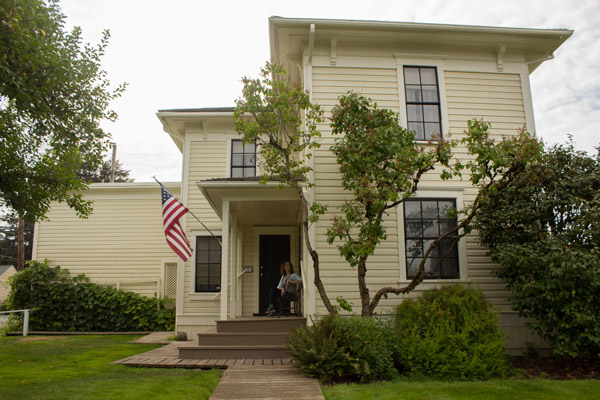
The Pacific Northwest's only presidential site.
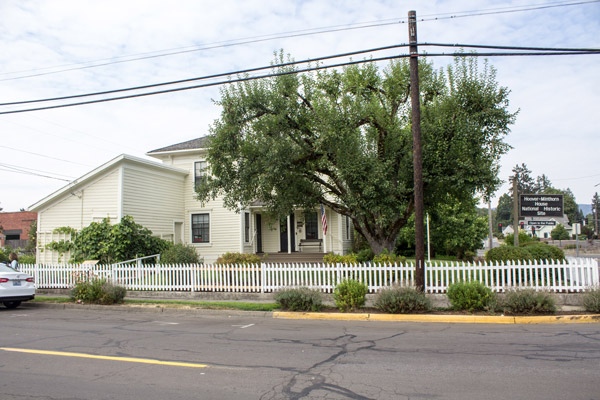
It ain't big, but by golly is it historic.

Inside the Minthorn's living room / parlor / doctor's office.
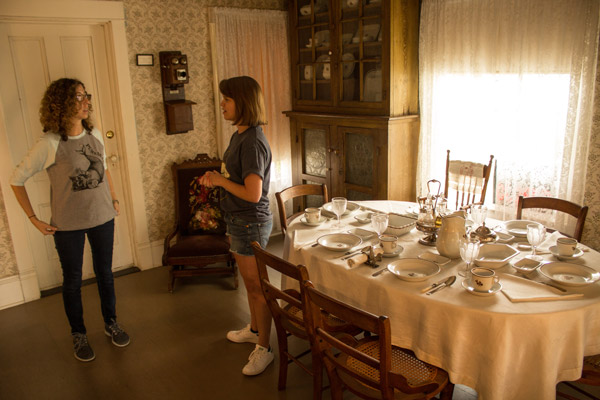
Getting the scoop from one of the very friendly docents.
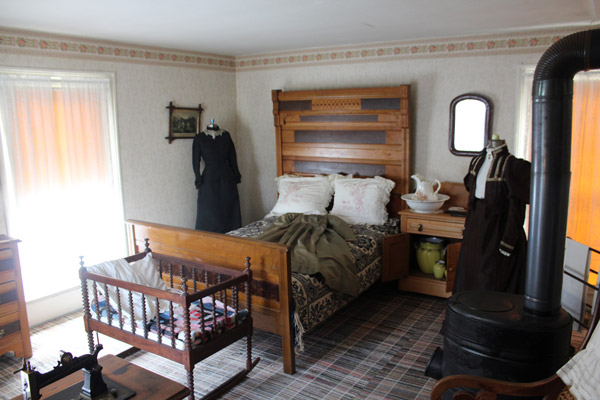
Henry's room, and some Quaker-looking artifacts to spruce the place up.
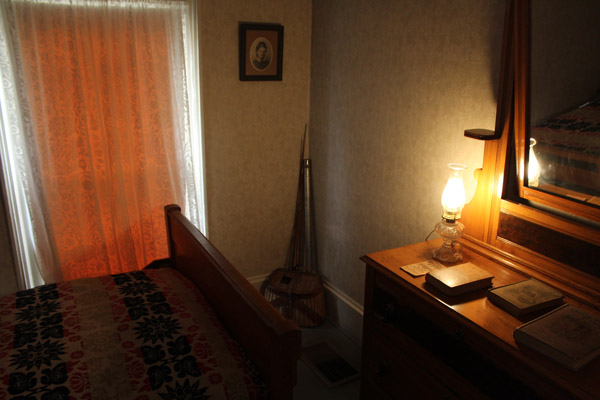
Bert's room. Note the fishing gear stashed in the corner.
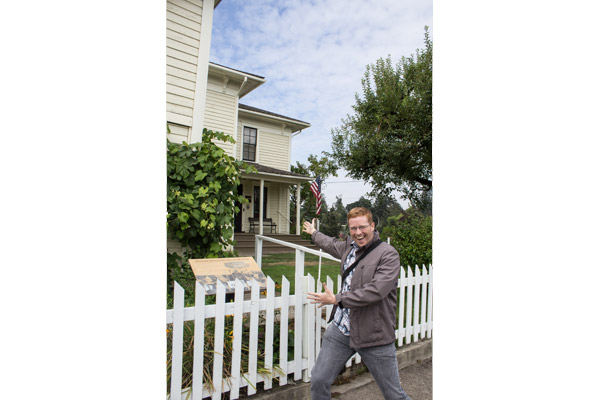
How can you not be excited about HERBERT HOOVER?
Born in Iowa, Herbert Hoover was orphaned before reaching his teen years. The consensus in his Quaker community was that he should stay with family.
Henry John Minthorn, the brother of Hoover's mother, had taken his family to Oregon. They settled in Newberg in 1885, where Henry served as superintendent of the Friends Pacific Academy and put his medical training to use as the town doctor. The Minthorns had lost their own son, leaving them only daughters. When they heard that Herbert had been orphaned, they asked to take him in. The Iowa Quakers put Bert on a train to the Pacific Northwest, whisking him away from his siblings and toward a lifetime of adventure.
Hoover lived in Newberg for three years, attending his uncle's school, doing the required farm chores and settling into his role as a replacement son. When the family moved down the road to Salem, he went with them. From there he transitioned to the first ever class at Stanford, a globe-trotting career as a mining engineer, world-renowned humanitarian work, government service, and the presidency.
Hoover's years in the White House apparently didn't sell the American public on the concept of another president from the Pacific Northwest. So to this day, the "Hoover-Minthorn House" is the only presidential site in the top-left corner of our nation. It's currently run by the National Society of Colonial Dames, and they're doing a bang-up job. Newberg has transformed into a distant suburb of Portland, and Friends Pacific Academy developed into George Fox University. But the home more or less retains its 1880s appearance. The lot is a little smaller and the surroundings are a lot more developed, but it's clearly a modest Quaker dwelling. Some of the furniture on display was actually the Minthorn's from that era, and Hoover's bedroom has even been restored to its old look. Hoover himself was there for the dedication in 1955 -- he lived forever, and still had a lot of gas in the tank at 81.
Allyson has been escorted to presidential sites before, but this was the most obscure site on her personal ledger. (It's not even top 10 for me.) But she says she enjoyed it! The 20-minute tour was pleasant enough, and not interrupted by any other serious visitors. (Like I said, obscure.) Our guide was a graduate of George Fox University, and her intern / assistant was a current student there. The guide's big project was a history of Oregon's wine industry, so we had the added bonus of picking her brain about the dozen or so wineries we passed on our way to Newberg.
And so we decided to reward our learning with a stop at the nearby Rex Hill Winery. The Willamette Valley is festooned with wineries and vineyards, and that one seemed as nice as any. Details are hazy, but here's what we know for sure: 1) They make a good pinot noir. 2) The operation is partially owned by San Antonio Spurs coach Gregg Popovich. 3) The women the next table over on the patio were trying to slam two bottles of wine in the 30 minutes before the tasting room closed. No matter where you are in the country, wineries draw classy people.
Rapidan Camp, Shenandoah National Park, Virginia
Visited in 2008 and 2013.
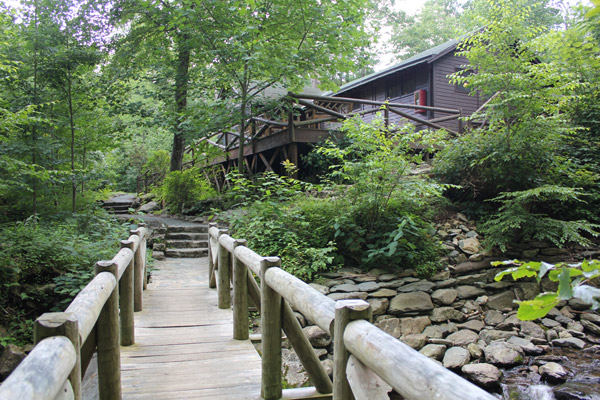
Crossing a stream towards the Hoovers' Shenandoah retreat.
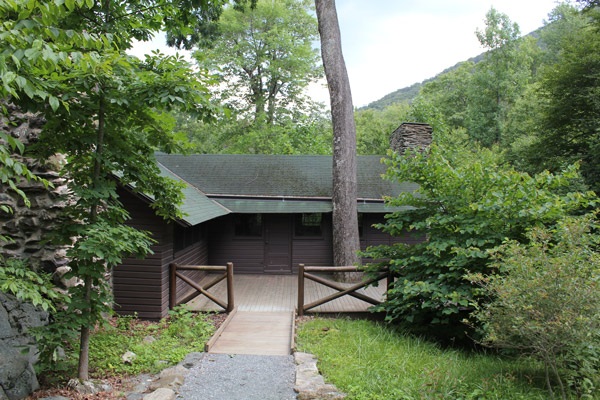
The "Brown House," which was luxurious by mining camp standards.
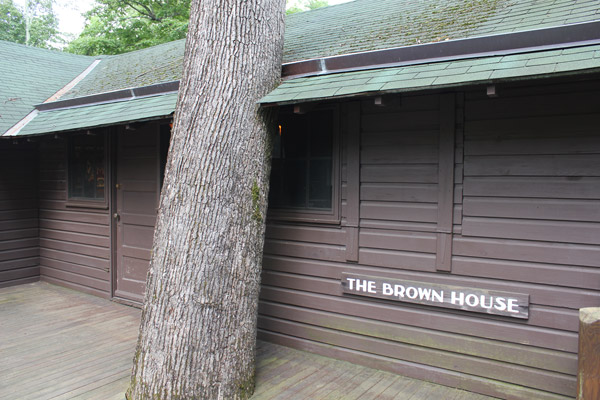
We have to work WITH the trees, not against them.
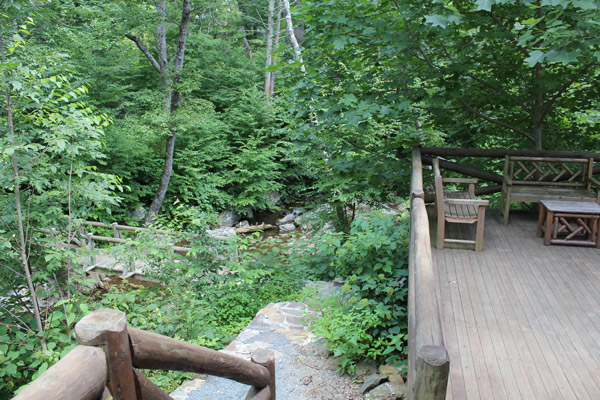
Looking off the great big porch toward the stocked stream.
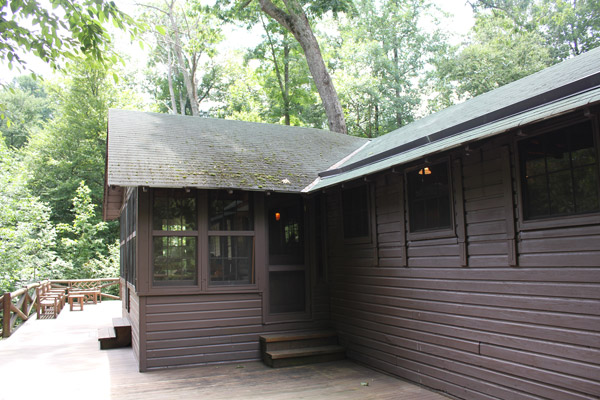
A porch fit for the leader of the free world, and his rugged wife.
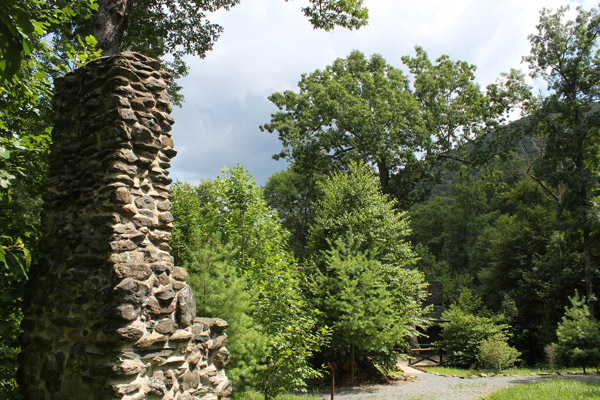
The free-standing campfire chimney, where Hoover probably ate smores.
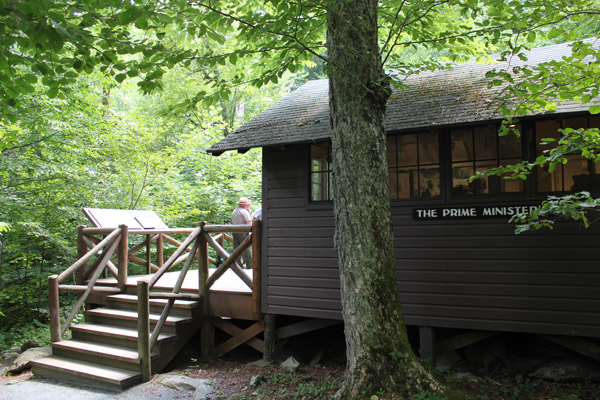
Where the prime minister of England stayed on a state visit.
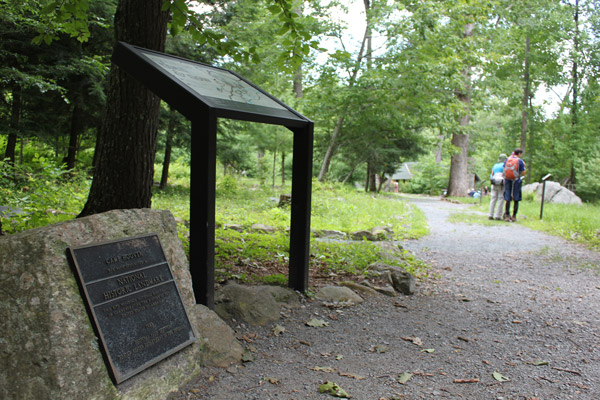
Walking into the camp area.
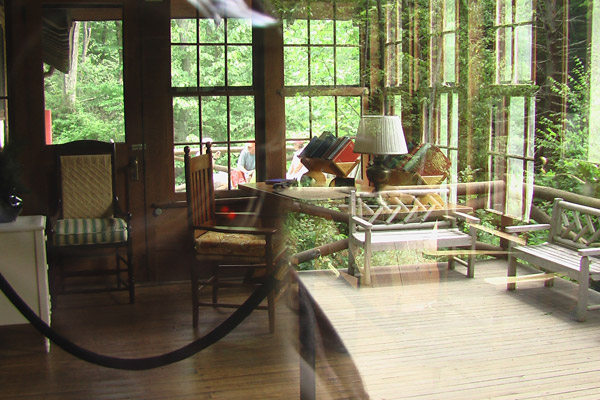
No pictures allowed inside, but here's a shot through the window looking in.
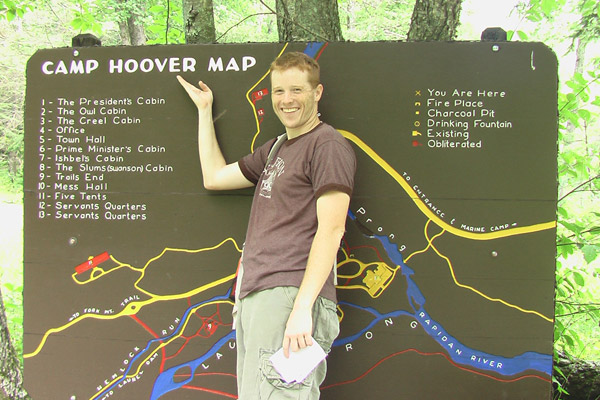
It'll always be Rapidan Camp to me.
"My friends have made the American people think me a sort of superman," Herbert Hoover said after his election as president. "They expect the impossible and should there arise in the land conditions with which the political machinery is unable to cope, I will be the one to suffer." And then there was a thunderclap, a timpani roll, the faint sound on the wind of an old woman cackling ...
We could use a man like Herbert Hoover right now! It's intriguing to think about a guy who, facing economic problems 10 times worse, rolled up his sleeves and did mostly nothing. He didn't think government should be fixing such things. (And he wasn't a hard-hearted bastard: he had a sterling record as a humanitarian.) Hoover might have been right -- some historians and economists think The New Deal made the Depression worse -- but now he's lodged on the blooper reel of presidential history, right after the clip of Chester Arthur getting hit in the nuts with a baseball.
It's a sad fate for a guy with a very impressive career. As a mining consultant, he was the highest salaried man of his age (27); he was one of the most prolific and energetic Cabinet secretaries in history (Commerce); and most important, he wrote a book on trout fishing.
TROUT FISHING! FEEL THE EXCITEMENT! Or better yet, live the excitement yourself! Visit Rapidan Camp, the original presidential retreat -- because when a significant chunk of the country is forced to live in tents, what better way to show them you care than by living in your own tent?
Here's the back story: After his election, Hoover (an Iowan) put out the word that he was looking for weekend digs away from the horrible godforsaken hellhole that is Washington. The good people of Madison County, Va., stepped up to the plate by stocking the local streams and brushing the three teeth in the county to a brilliant gleam. One sales pitch later, the Hoovers dipped into their personal fortune to buy some land, and Rapidan Camp was born. Today it's part of Shenandoah National Park. (Hoover donated it to the government after his presidency.)
When they say "camp," they mean it. The Hoovers weren't nancies -- you don't run mining operations in China for a decade without learning a) how to rough it; and b) enough karate to fight off bears. The original plan was for everyone to stay in canvas tents, and also to hunt large game with obsidian-flake daggers while wearing loincloths. But trips to Rapidan became working vacations, and you can't tell the Prime Minister of England to bring his own sleeping bag more than once, so the camp was improved to include some more-permanent structures. That included "The Brown House" (get it? It's not white! Hah!) for the Hoovers themselves.
It was cozy, and ... uh, brown. The house is right next to a trout stream, and the porch was built around existing tree trunks. I didn't get to go inside my first time through, because they keep it locked up and you need to be on a guided tour. Thank god I'm persistent. I went back in 2013, once again without checking the tour schedule. I drove out to Shenandoah National Park, walked down a fire road for a few hours and prayed to the presidential gods.
My faith was rewarded, and before long a volunteer was letting me into the Brown House. The Hoovers weren't exactly camping in luxury, but the house was nicer than anything in the average Hooverville. Lou Henry had a nice office area on the back porch for working on her correspondence. There was a big open living room area, with huge fireplaces to warm everyone up at night. The den could be draped off to make another sleeping area. And there were little bits of Hoover-flavored decoration all around. Big woven Indian mats are hanging on the walls (with an unfortunate and, at the time, totally innocent swastika pattern), and there are mineral samples on some of the shelves. Both the Hoovers were geology experts.
Herbert and Lou didn't mind bunking up together, but the Brown House actually has a separate bed for the president; he was awake and working enough when on vacation that he didn't want to disturb his wife's sleep every time he had to get up. Their rooms are situated pretty close to camp's trout stream, which was regularly stocked with suitably large fish for the president.
There's also more to the site. You can chill out on the porch and enjoy the view, and there's a really informative little display in one of the other cabins on the history of the site and the Hoovers themselves. They were a pretty dynamic duo; Lou Henry (i.e. Mrs. Hoover) was the first American woman with a geology degree and apparently oversaw the entire construction and management of Rapidan Camp, right down to the proper techniques for lashing the camp's Filipino manservants. Mostly, though, you'll just want to soak up the atmosphere. I've never been a big camper or fisherman, but if the entire world was falling into crippling poverty and I was powerless to stop it, you know what? I might buy 160 acres in the mountains and bait a hook every now and then. That or buy a new Nintendo. Whichever is in my budget.
